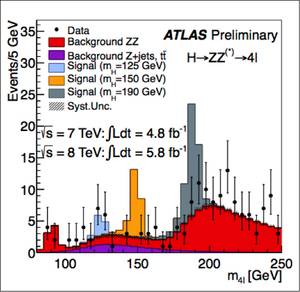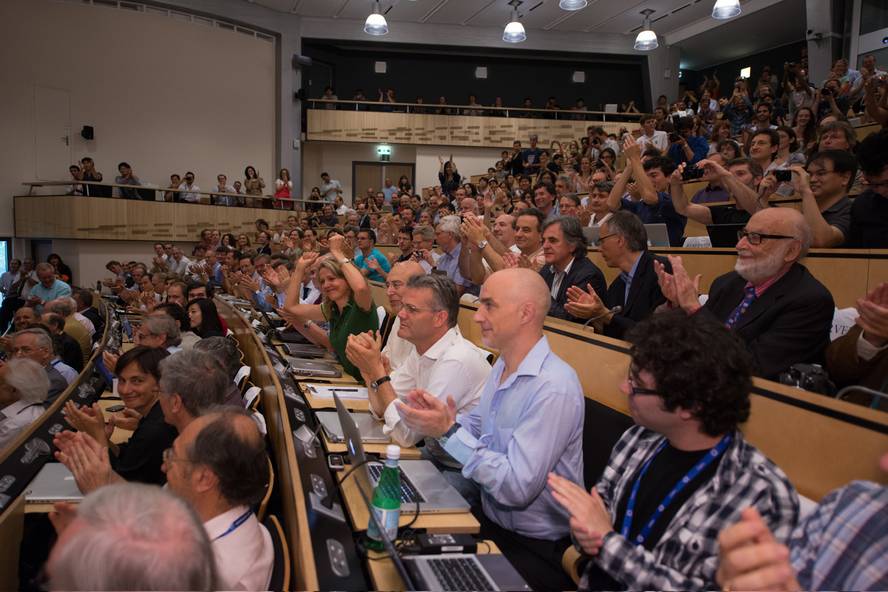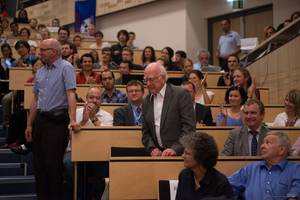The Higgs Boson, no doubt
The news was released today at the CERN laboratory in Geneva. Two teams have worked on the LHC accelerator to detect the Higgs boson (CMS and ATLAS detectors) and both have presented the result. Joe Incandela, spokesperson for the first CMS detector and Fabiola Gianotti ATLAS later, said that the missing particle in the Standard Model is not a theoretical idea: Higgs boson has been detected. This explains why some particles and others have no mass.
-->Chronology of the discovery of the Higss boson
-->Interview with Rolf Heuer, director of CERN in April 2011
-->LHC trying to emerge Physics

There was Peter Higgs himself, a mathematician who announced 48 years ago the existence of the boson. Excited, he told spokespeople for both groups: “I am extraordinary impressed by what you have done.”
In fact, both groups presented the discovery in December 2011, but a detail was missing: certainty. Detection of the Higgs boson is a statistical event. The LHC accelerator accelerates billions of protons and makes them collide with each other in each experiment, and not all shocks are the same.
Therefore, it is necessary to analyze the measured by the detectors, through statistics, to know what is the product of each type of shock, and what physicists wanted to hear today is that the statistical standard deviation, the famous s, is of value greater than 5, which is the minimum necessary to confirm the detection. The two detectors have achieved this value and upon seeing this data Geneva listeners begin to applaud.
This is a complex work, as the famous Higgs boson only occurs in some proton collisions. In addition, the boson is not stable, it breaks down very quickly to form other particles. And in some cases these particles are also broken down to form others. This process is repeated several times before physicists generate the signal they detect. Precisely, the work of physicists consists in analyzing back what happened in the shock, if in one step the Higgs boson was formed.

The problem is that the Higgs boson has many ways to undo—five “channels” in the language of physicists—and that each of them must be analyzed. In the data presented today, the two channels offer the most accurate results. In the first, the Higgs boson disintegrates into two photons, the gamma radiation; in the second, it disintegrates into two Z bosons, which also disintegrate to give four necklaces. According to data, the Higgs boson has an approximate mass of 126 GeV.
These channels are the ones that have given the clearest results, but if we take into account the analyses of other forms of disintegration, the standard deviation is very close to 5, so there is no doubt about it. Detection may be good.







